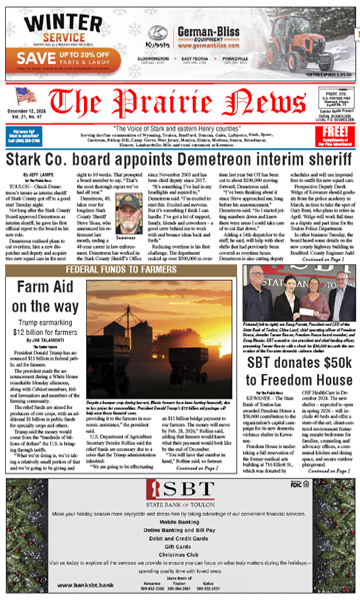By Jeff Lampe
Driving in the dark through northern Iowa last week, our senses were still under constant assault.
Most obvious on the landscape were blinking red lights for miles in all directions. Those flashing lights mark are indicators of wind-turbine fields that since 1983 have spread steadily across Iowa.
The lights are noteworthy, but not as intrusive as the smells. All the way across U.S. Route 20, our noses were buffeted by the scent of animals living in confined buildings: hogs, dairy cattle, chickens and turkeys, stinky all of them.
My youngest son was with me for the drive west to our annual Lampe pheasant hunt, some of which takes place on farmland that has been in the family well over 100 years.
Many stories are told of pheasant hunts of old and forays into the gold-red prairies of fall and winter. But blinking lights and stinky hogs are not a part of those tales about the pastoral joys of farm country.
So it goes in an Iowa landscape that bares little resemblance to the one I once knew. Gone are so many of the old farmsteads. In their place, confinement buildings keep spreading. A 2020 EPA study showed Iowa led the country in concentrated animal feeding operations with 3,896 permitted CAFOs – 18 percent of all such facilities in the U.S. Iowa’s lead remains safe, as the total today is well over 4,000 such facilities.
Yes, I know: The pervasive stink of hogs is the smell of money. Many rural Iowans rely on CAFOs to keep farming operations running and to stay on the farm.
But allowing CAFOs comes with a cost, as the Iowa Department of Natural Resources outlined last month with a new cost-benefit analysis on CAFOs. Thanks to runoff waste from all those confined critters, also called nitrate pollution, the DNR report predicts Iowans will spend up to $333 million on nitrogen removal in drinking-water systems over the next five years.
Worse still, the Iowa Cancer Registry’s 2023 report found that the state ranks second in the nation for overall cancer incidence, behind only Kentucky. And Iowa is the only state where cancer rates are still increasing.
Nitrate exposure is linked to some of those cancers, as well as to several other health problems ranging from asthma to birth defects.
Wind power is another Iowa claim to fame. The state ranks second only to Texas in the U.S. in terms of net generation of electricity from the wind. More impressive still is that the Hawkeye State ranks first in the country by deriving 62 percent of its electricity from windmills.
Criticism of wind power is less prevalent and focuses mostly on the impacts on aesthetics and property values caused by giant turbines and their flickering blades.
But wind power does share something very basic in common with CAFOs. The biggest support for huge energy-generating towers comes from people who do not have to live next to them.
What strikes me in Iowa is how much of the infrastructure investment comes from elsewhere. Industry giants in the meat-packing and energy markets are happy to use Iowa’s open space for the gain of corporations and investors who live thousands of miles away.
Maybe that’s one reason Iowans, like Illinoisans, were not particularly eager to invite CO2 pipelines into their state.
Maybe, like me, they remember an Iowa where you saw more stars at night than flashing red lights and could drive through the countryside without wrinkling your nose every few miles.
Contact Jeff Lampe at (309) 231-6040 or jeff@wklypost.com







